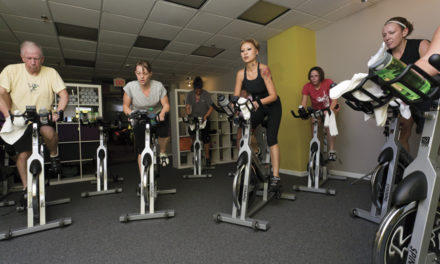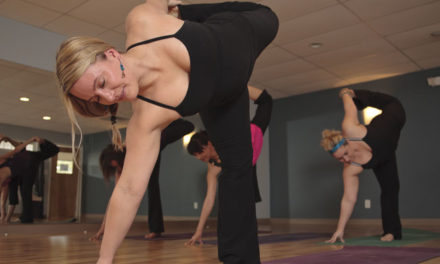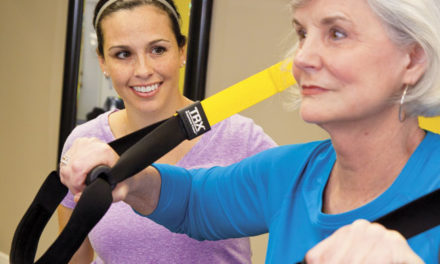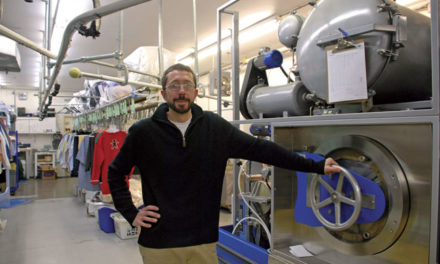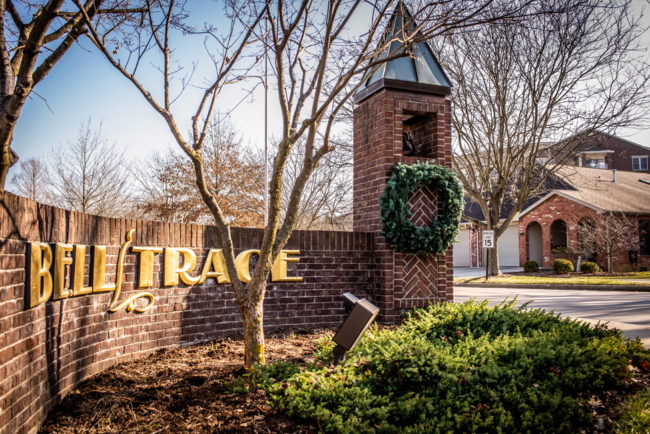
by JANET MANDELSTAM
The sweet potato casserole, a traditional part of a holiday meal at Bell Trace, took a new path from the kitchen in the year of COVID-19. Instead of residents and their visiting family members being served in the dining room, individual casseroles were prepared for pickup by families along with a photo of the resident, who remained at Bell Trace.
It’s just one small example of the many ways that the Bloomington senior living community has had to navigate the medical and social challenges that come with managing the coronavirus and keeping residents safe. “We’ve had to be creative in how we take care of people,” says Andrew Keen, co-executive director.
Bell Trace is actually two separate entities: independent and assisted living, where residents live in their own apartments or cottages, and the Health & Living Center, a skilled nursing facility. When the new coronavirus emerged early last year, Bell Trace, like other senior living facilities, created COVID-19 preparedness and response plans with guidance from the Centers for Disease Control and Prevention (CDC) and the Indiana Department of Health.
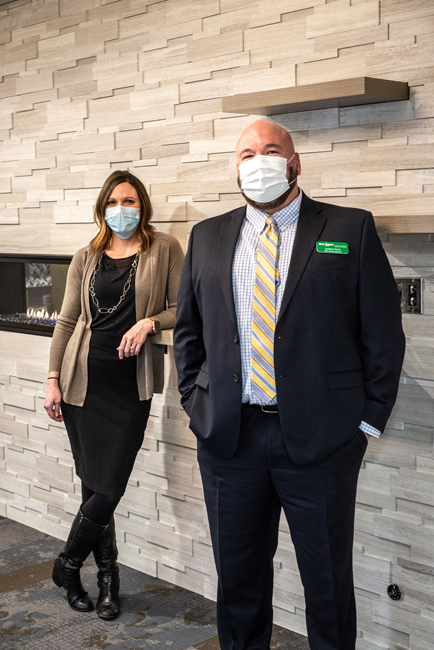
For the 176 residents in independent and assisted living, life is “back to almost normal,” says co-Executive Director Jennifer Devitt. “The dining room is open at 50% capacity, and all regular activities are ongoing. Residents can come and go. They wear masks everywhere except in their apartments, and they keep a 14-symptom diary and monitor for any signs of COVID.”
To keep the facility as virus-free as possible, Devitt says, “We screen every employee as they enter. And an outside company comes in to sanitize on a weekly basis in addition to our regular daily cleaning.” Should any residents test positive, they would be quarantined in their apartment unless they required skilled nursing services.
Life in the Health & Living Center has been more restricted. The center is licensed by the Centers for Medicare & Medicaid to care for up to 80 residents.
“Everyone is screened at the front door,” Keen says, and that includes temperature checks, hand sanitizing, and issuing of masks and face shields. When the center observes two weeks without a COVID-19 case, he says, “We allow indoor visiting and communal dining, and the beauty and barber shops are open for residents.” The visits occur only in common areas, not in the residents’ rooms. “And any personal items brought for residents are held in quarantine for 24 hours before given to the resident,” Keen says.
Should a new infection arise, communal dining is discontinued and meals are delivered to the residents in their rooms. Visits are then limited to outdoor settings and must be scheduled in advance.
The Health & Living Center is divided into three zones—red, yellow, and green. “All patients receive a COVID test prior to admission so we know where they fit in,” Keen says. The red zone houses individuals who have the virus, including some who come to Bell Trace directly from a hospital. “The zone is physically separated with a dedicated staff to minimize the chance of spreading the virus,” he says. All new admissions without COVID-19 are quarantined in the yellow zone for 14 days and then, if still virus-free, they move to the green zone, where residents have tested negative for more than 14 days.
In skilled nursing, medical appointments are often a hybrid of virtual and in-person care. Keen says staff wear N95 masks and clear face shields, part of the personal protective equipment that CarDon, the parent company of Bell Trace, acquired early in the pandemic. For medical care in independent living, “we’re seeing increasing use of telemedicine by residents,” Devitt says. Many have their own computers, and others use iPads provided by CarDon. Both facilities maintain transportation for essential medical appointments.
With vaccines becoming available, nearly all of the residents in both skilled nursing and independent living have agreed to be vaccinated, although Bell Trace is not mandating vaccination. Staff began receiving the vaccine in December and residents in early January. “We are strong advocates of vaccination,” says Keen.
While keeping residents safe and meeting medical requirements is paramount during the pandemic, tending to the social and emotional needs of the residents gets nearly equal billing, especially around holidays. “Many of our residents are 90-plus,” says Keen. “We realize how important it is to keep them in touch with their families.” Virtual visits are common now. “We’re seeing a lot of Zoom calls or FaceTime,” says Devitt.
Where possible, Bell Trace is keeping up holiday traditions. The Christmas dinner in independent living is “typically a huge event,” says Devitt. “We had Christmas dinner, but this year it was individual snacks instead of a big buffet. And there was caroling with masks.” In skilled nursing, Keen says, “The sweet potato casseroles were symbolic of the tradition of a meal that meant a lot to residents, families, and staff.”
Not every resident at Bell Trace has family outside the facility. Keen and Devitt say they have witnessed increased generosity toward this cohort from both staff and other residents. In independent living, “Residents bought Christmas presents for others who didn’t have family,” says Devitt. In the Health & Living Center, Keen says, staff threw in their own money for the same purpose.
That’s not the only way Keen says he is seeing a growing bond between staff and residents. “There’s a lot more one- on-one activity—reading stories, doing crafts,” he says.
Staff will stop by residents’ rooms with a cart of snacks; the recreational therapist plays a trivia game, calling out questions down the hallway while residents answer from their rooms.
Other relationships have strengthened during the pandemic as well. “One of the positive things to come out of this is the heightened relationship between residents’ families and the facilities,” says Keen. “Families are understanding and gracious, even when I’m calling them with bad news. We’ve even hired a few family members. And our relationship with state government is more collaborative than in the past. It’s eye-opening, the support we have had to keep our residents safe.”


